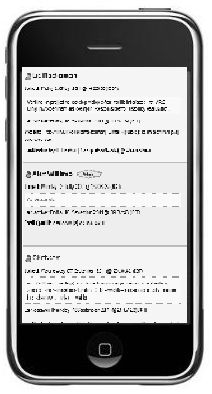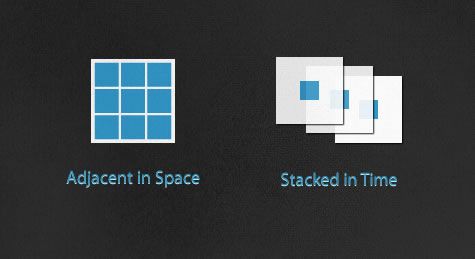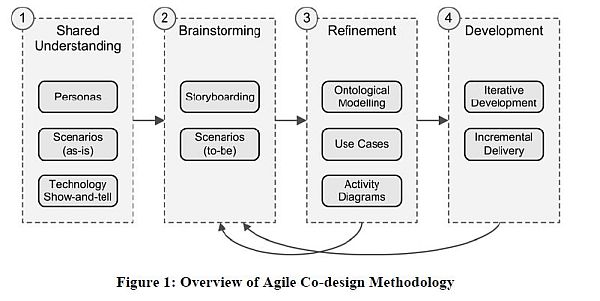A quick story board has been designed to demonstrate the basic functions for a typical student/user. The slides illustrate views from the current Synote website with the first of the improvements requested in previous blogs. .
Scenario 1
A researcher wants to go to a group that has been set up by their research group and view/listen to another researchers recordings. The researcher has already registered as their university login grants them access to Synote.
Slide 1:
This is only slightly changed from the original. The interface has been complemented on its lack of clutter and easy to use at this stage. But as mentioned by evaluators, written instruction is now given to show users what exactly it is they are searching for in the ‘Google style’ search function. It was also decided that there should be an FAQ. For the ‘look and feel’ the heading is being designed to be consistent across all pages of the Synote website.
Slide 2:
The login page is also largely unchanged. There is now help for choice that need to be made about the username and password, which was requested in the co-design sessions. There will also be a “have you forgotten your password?” link, so that users who forget their password can have it reset.
Slide 3:
This slide shows the look of the homepage once the user has logged in. Also it is noted that sometimes users have gone to ‘watch/listen’ to a recording before logging in and have been redirected to the login page, after which they always returned to the homepage. Should the login be successful, the login should redirect you to the last page visited.
Slide 4:
This page shows the list of groups that have been created in Synote. This design is what the “Users” list will look like (without the “shared” column). It was also discovered that the search at the top was not specific to the users/groups in the list shown, but it was a keyword search for the entire site. This should be changed so that users may use it to search content that is specific to the list they are viewing.
Slide 5:
This page shows a specific group’s page along with all of the recordings that have been shared within this group. In the current version, if you select the title of the recording it took you to a page that showed more information about it. This has been changed to a “More info” link. “Replay” has also been changed to “Play” to make it slightly clearer to users.
Slide 6:
This is the “More Info” page for a specific recording. This demonstrates a view that the creator would have of this page along with what they can do to this recording. This has been shown to illustrate that the page has its uses, but the navigation has been modified so that users who do not need to visit this page, do not do it unintentionally.
Slide 7:
This is the recording player page. This demonstrates a typical layout and highlights where all the control will now be on the page. It is hoped that by grouping the functionality on a small banner at the top, it will help make the advanced functionality easier to find and use. This is chosen over having functions surrounding each of the 4 sections of the page. The bar and the search box can also be minimised up to the top of the page so that more room can be generated on the screen if required.
Scenario 2
An individual wants to go to one of the research recordings they have published so that they can make some comments (i.e. synmarks) to it. He/ She will need to access them via their own profile.
Slide 1:
This is only slightly changed from the original. Written instruction is given to show users what exactly it is they are searching for in the ‘Google style’ search function. Once again there is the FAQ (as above) and the heading is consistent across all pages of the Synote website.
Slide 2:
The login page is also unchanged for the most part (as above). There is help for the username and password and the “have you forgotten you password?” link so that users who forget their password can have it reset.
Slide 3:
This slide shows the look of the homepage once the user has logged in. Also it is noted that sometimes users have gone to ‘watch/listen’ to a recording before logging in and have been redirected to the login page, after which they always returned to the homepage. Should the login be successful, the login should redirect you to the last page visited.
Slide 4:
This shows a view of a user’s profile, including their details, functions they can carry out on their profile and a list of all the recordings they have published. Next to each recording are the functions that the users may take for each of the recordings. This has changed from the original system in that all the information about a user and their activity is all accessible via their profile page.
Slide 5:
This is the recording player page. This demonstrates the view the creator will have of their own recording. All the functionality required to edit the recording can be found in its respective section of the page. The bar and the search box can also be minimised up to the top of the page so that more room can be generated on the screen if required.
Slide 6:
No changes are planned for the way Synmarks are made at present.
Scenario 3
This is just the beginning of the journey for the researcher wishing to find his own recordings (1), make some annotations (2) and link to a video (3) – the upload system has yet to be story boarded.
Slide 1
Slide 2
Slide 3
 The next meeting will be held on October 13th from 2-3pm in the Access Grid Room, Building 32 level 3.
The next meeting will be held on October 13th from 2-3pm in the Access Grid Room, Building 32 level 3.










